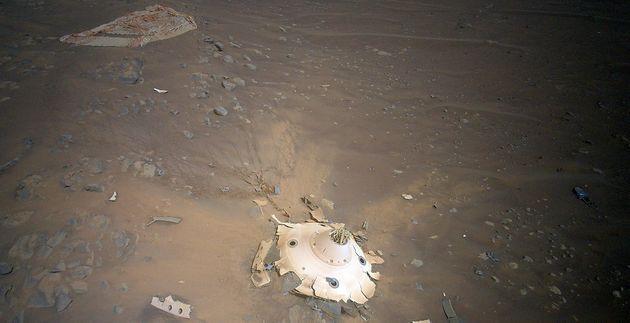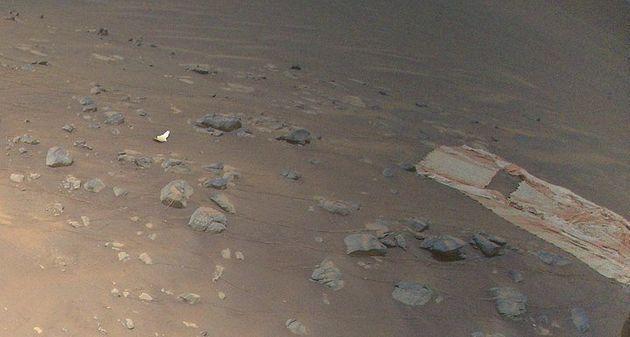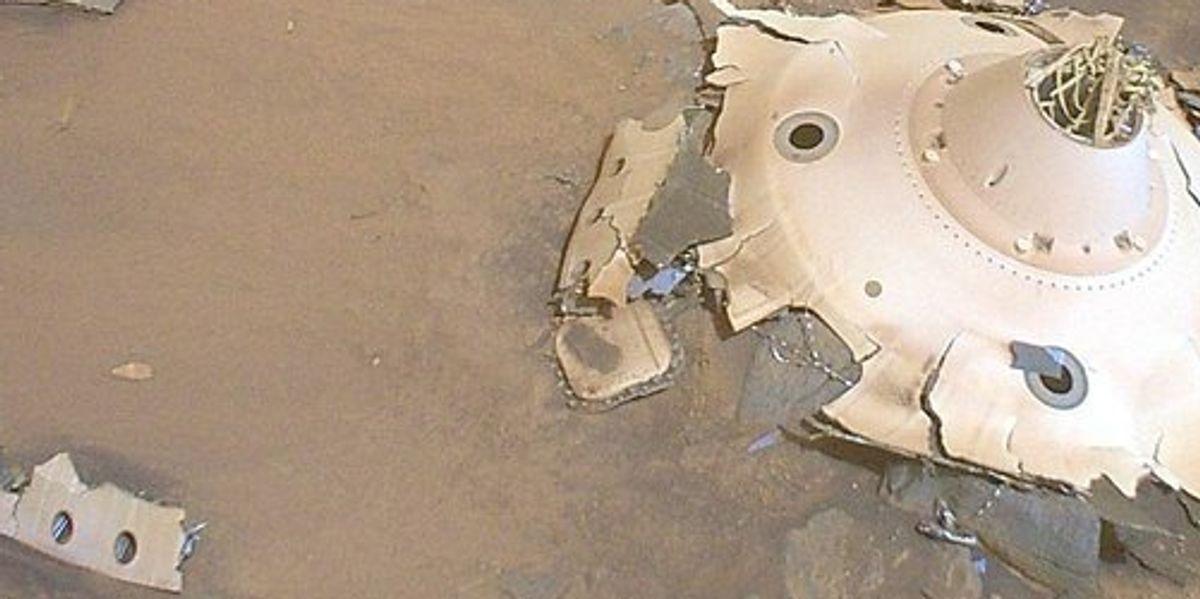NASA’s Ingenuity helicopter on Mars has captured new images of spacecraft debris on the red planet. But they weren’t aliens.
The images, taken earlier this month from a height of 26 feet, show the fabric-covered cables connecting the backshell to the supersonic parachute used during last year’s nail-biting landing.

This image of Perseverance’s backshell (left of center) and supersonic parachute (far right), was collected on April 19, 2022 by NASA’s Ingenuity Mars Helicopter from a height of 8 meters. (Photo: NASA/JPL-Caltech)
The cable appears intact, the space agency said.
“The backshell and parachute helped protect the rover in deep space and during its fiery descent to the surface of Mars,” NASA’s Jet Propulsion Laboratory said in a press release.

Cables emerge from the backshell to the supersonic parachute that brought the Ingenuity helicopter and Perseverance rover to Mars. (Photo: NASA/JPL-Caltech)
NASA said the debris field is the result of the backshell and parachute hitting the Martian surface at 124 mph after it released the Perseverance rover, which landed much softer via a rocket-powered descent.
“The hood shows no signs of damage from the supersonic airflow during inflation,” NASA said.
Only about a third of the 70-foot-wide parachute is visible in the images:

The supersonic parachute. (Photo: NASA/JPL-Caltech)
NASA said analysis of the images could help provide insight into future missions to Mars.
“Perseverance had the best-documented Mars landing in history, with cameras showing everything from parachute inflation to landing,” said Ian Clark, former Perseverance systems engineer and current leader of the Mars Sample Return takeoff phase, in a press release. . “But Ingenuity’s images offer a different point of view. If they either reinforce that our systems worked the way we think they worked, or even provide just one dataset of technical information that we can use for Mars Sample Return planning, it’ll be great. And if not, the photos are still phenomenal and inspiring.”
The plutonium-powered Perseverance, NASA’s largest and most advanced rover on Mars, will hunt for signs of life in an area scientists believe was once a river delta. It will also take samples, seal them in tubes, and leave them to collect and return to Earth through a future mission.
This article originally appeared on HuffPost and has been updated.

